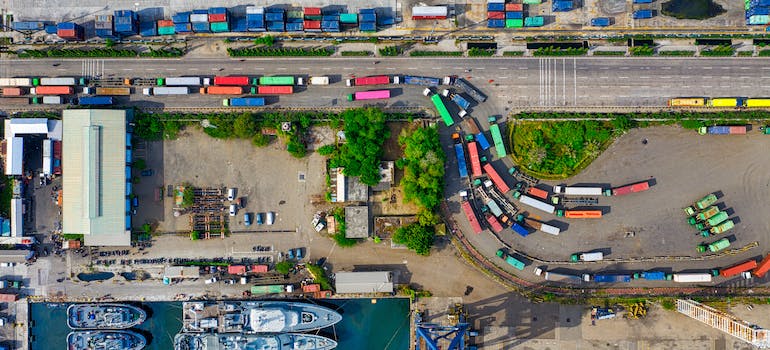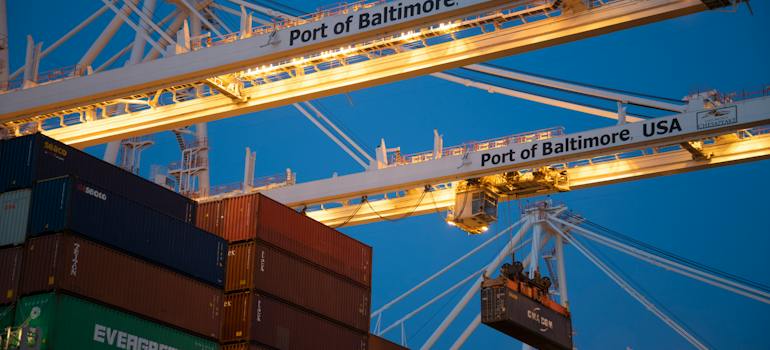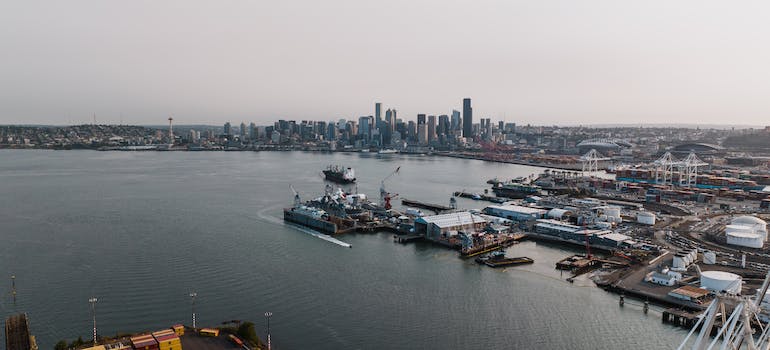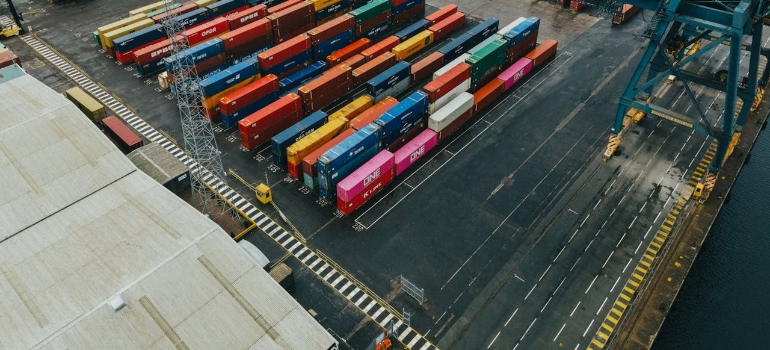The Effects Of Climate Change On U.S. Ports And Shipping
Climate change, a global environmental challenge, reshapes landscapes and industries worldwide. Among the most affected are U.S. ports and the shipping industry. The rising sea levels, increased frequency of extreme weather events, and other climatic shifts pose significant risks to these critical infrastructures and operations. As gateways to global trade, the health and efficiency of these ports and their shipping routes are crucial for the economic stability of the United States and the global market. This Hansen Bros. Moving & Storage exploration highlights the urgency of addressing the effects of climate change on U.S. ports and the innovative approaches to mitigate its impact.
The Rising Threat of Sea Level Rise
Sea level rise is one of climate change’s most direct and alarming consequences. Glaciers and ice sheets melt as global temperatures rise, contributing to increased sea levels. Besides, the warming of the oceans leads to the thermal expansion of seawater, further exacerbating the rise. This phenomenon is not just a future prediction but a current reality, with sea levels having risen significantly over the past century and projections indicating a continued and potentially accelerated rise in the coming decades.
Specific Impacts on U.S. Ports
The impact of rising sea levels on U.S. ports is profound and multifaceted. They threaten port infrastructure in cities like San Francisco, New York City, and Seattle, including docks, warehouses, and transportation networks. For instance, in San Francisco, the combination of rising sea levels and potential seismic activity raises concerns about the resilience of its port facilities.

Still bearing the scars of Hurricane Sandy, New York City faces the dual challenge of rising sea levels and increased storm surges. Seattle, known for its significant maritime activity, must prepare for the impact on its shipping operations and waterfront developments. The vulnerability of these ports to sea level rise affects local economies and has broader implications for national and international trade.
Recent Reports on Effects Of Climate Change On U.S. Ports
Recent reports and studies provide concrete examples of how sea level rise is impacting U.S. ports:
- Port of San Francisco: The Port of San Francisco has been the focus of several studies, such as the “Water Level and Sea Level Rise Background” report by SF Port. This study emphasizes the economic costs and the necessary adaptations for the waterfront infrastructure in response to rising sea levels. It highlights the port’s challenges in managing these changes and the strategies being developed for resilience.
- New York City Post-Hurricane Sandy: In New York City, the aftermath of Hurricane Sandy has been the subject of extensive study. Reports detail the extensive damage caused by storm surges intensified by higher sea levels. These studies estimate billions of dollars in losses and recovery costs, underscoring the need for improved coastal defenses and infrastructure resilience in the face of rising sea levels.
- Seattle’s Proactive Planning: With its significant maritime industry and extensive coastline, Seattle has proactively planned for rising sea levels. Recent initiatives in the city focus on assessing and enhancing the resilience of port facilities. These efforts showcase how ports and international commercial shipping companies can anticipate and mitigate the impacts of rising sea levels through strategic planning and investment.
These case studies illustrate the challenges and effects of climate change on U.S. ports and the diverse strategies employed to adapt to and mitigate the impacts of rising sea levels. They underscore the importance of proactive measures and the need for continued research and investment to protect these critical infrastructures.
Increased Frequency of Extreme Weather Events
Climate change has been linked to an increased frequency and intensity of extreme weather events. These events include hurricanes, tropical storms, heavy rainfall, and flooding, all of which have become more common and severe due to global warming. These weather events can devastate infrastructure, including ports often located in vulnerable coastal areas.

Impact on Shipping Routes and Port Operations
Extreme weather events significantly disrupt shipping routes and port operations. Ports must often close during severe weather, leading to delays in shipping and logistical challenges. The damage caused by these events can also lead to long-term operational disruptions. For example, hurricanes and tropical storms can damage cranes, warehouses, and other critical Seattle storage infrastructure. At the same time, flooding can impact access roads and rail lines, crucial for moving goods.
Examples of Recent Extreme Weather Events Affecting U.S. Ports
- Hurricane Harvey (2017): This hurricane caused significant damage to ports along the Gulf Coast. The Port of Houston, one of the largest in the United States, experienced extensive flooding, leading to closures and millions of dollars in damages.
- Hurricane Sandy (2012): Affecting the East Coast, Hurricane Sandy caused widespread destruction, particularly in the Port of New York and New Jersey. The storm surge led to flooding and significant damage to port infrastructure.
- Tropical Cyclones and River Flooding: A study highlighted by PreventionWeb estimates the total climate risk to ports, mostly from tropical cyclones and river flooding, to be worth billions of dollars. These events are disruptive to port operations and can cause extensive physical damage.
These examples underscore the vulnerability to the effects of climate change on U.S. ports, which are becoming more frequent and severe due to climate change. The need for enhanced resilience and adaptation strategies for freight companies in Seattle is clear to mitigate the impacts of these events on the crucial port infrastructure and operations.
“Sunny Day Flooding” and Its Consequences
“Sunny day flooding,” also known as nuisance or high tide flooding, occurs in coastal areas when tides reach about 2 feet above the daily average high tide and start to flood streets or seep through storm drains. Unlike flooding caused by storms or heavy rainfall, sunny day flooding happens under clear skies and is primarily driven by specific tidal conditions. This phenomenon is increasingly observed in many coastal cities, especially during new or full moons with higher tides.

How Higher Tides and Sea-Level Rise Contribute to This Phenomenon
The increasing frequency of sunny day flooding is closely linked to rising sea levels due to climate change. As global temperatures rise, melting polar ice and the thermal expansion of seawater contribute to higher sea levels. These elevated sea levels, in turn, make high tides higher than they used to be, leading to more frequent occurrences of sunny day flooding. This type of flooding is particularly problematic in areas with flat topography and poor drainage systems.
Impacts on Port Infrastructure and Operations
Sunny day flooding can have significant impacts on port infrastructure and operations. For instance, as reported by WFAE, ports experience operational disruptions due to climate-induced higher tides and rising sea levels. This flooding can inundate docks, warehouses, and storage areas, potentially damaging goods and disrupting the operations of longstanding shipping companies in Seattle and other seaports.
Additionally, frequent road closures and reduced stormwater drainage capacity, as noted by the NOAA Office for Coastal Management and the U.S. EPA, can hinder access to ports, affecting the movement of goods and workers. Over time, consistent exposure to saltwater can also lead to the deterioration of infrastructure, requiring increased maintenance and repair costs. As sunny day flooding becomes more common, ports must invest in adaptive measures such as elevating infrastructure, improving drainage systems, and developing more resilient operational plans.
Economic Implications
The economic effects of climate change on U.S. ports are substantial. The cost of damages from extreme weather events and sea-level rise can run into billions of dollars. For instance, post-Hurricane Sandy, the Port of New York and New Jersey faced enormous repair costs. Beyond immediate damages, ports must invest in long-term adaptations like elevating structures, reinforcing sea walls, and improving drainage systems. These preventative measures, while costly, are essential to mitigate future risks and ensure the continuity of port operations.
Economic Impact on the Shipping Industry
Climate change significantly impacts the shipping industry, integral to global trade. Disruptions caused by extreme weather events lead to delays, rerouting, and sometimes cargo loss, all of which incur substantial costs. Insurance premiums for shipping companies are on the rise due to the increased risk. Moreover, the need for more resilient ships and infrastructure to withstand harsher conditions leads to higher capital investments, ultimately affecting the industry’s profitability.

Broader Economic Effects on Trade and Commerce
The ripple effects of climate change on ports and shipping extend to the broader economy. Ports are critical nodes in the global supply chain; disruptions in their operations can lead to delays and increased costs for various industries. This, in turn, affects the prices of goods and commodities worldwide. Likewise, the need for significant investments in adaptation and mitigation strategies can strain public and private financial resources, impacting economic growth.
Environmental and Ecological Effects
Climate change and associated sea-level rise have profound impacts on coastal ecosystems. The inundation of saltwater into freshwater habitats, erosion of shorelines, and increased sedimentation can drastically alter these environments. These changes can lead to the loss of crucial habitats such as mangroves and wetlands, which play a vital role in carbon sequestration and serve as natural buffers against storms and flooding.
Consequences for Marine Life
The effects of climate change on marine life are significant. Changes in water temperature can shift the distribution of fish and other aquatic species, disrupting established ecosystems and fishing industries. Ocean acidification, a result of increased CO2 absorption by seawater, further threatens marine biodiversity, particularly affecting coral reefs and shellfish populations. These changes have cascading effects on the entire marine food web.
Long-term Environmental Changes
Long-term environmental changes due to climate change include altered weather patterns, rising sea temperatures, and more frequent and severe extreme weather events. These changes can lead to more prolonged droughts, more intense storms, and changes in ocean currents. The cumulative effect of these changes poses a significant threat to biodiversity, water quality, and the overall health of marine and coastal ecosystems.
Adaptation and Mitigation Strategies
Adapting to the effects of climate change on U.S. ports requires significant infrastructure improvements and investments. Ports should emphasize elevating docks, reinforcing barriers against storm surges, and improving water management systems. These adaptations are crucial for protecting infrastructure from increasing flooding risks and extreme weather events. Such investments safeguard the ports and ensure the continuity of trade and commerce.

Innovative Technologies and Practices in the Shipping Industry
The shipping industry is increasingly adopting innovative technologies and practices to mitigate the impacts of climate change. This includes the development of more fuel-efficient ships, using alternative fuels like LNG (Liquefied Natural Gas), and implementing advanced navigation systems to optimize routes and reduce emissions. Further, the industry is exploring using automation and digital technologies to enhance operational efficiency in supply chain management and resilience against climate-induced disruptions.
Policy Changes and Environmental Regulations
Effective policy changes and environmental regulations are essential to mitigate the impacts of climate change. Governments and international bodies must implement stricter emissions, waste management, and coastal development regulations to reduce the environmental footprint of port operations and shipping. Policies promoting renewable energy sources and encouraging sustainable practices in the maritime sector are also gaining traction.
Sustainable Future for Ports and Shipping in the Face of Climate Change
As we confront these multifaceted challenges, it is clear that the effects of climate change on U.S. ports are not just immediate concerns. They are precursors of the broader changes reshaping our global environment and economy. The economic implications are profound, from the direct costs of adapting port infrastructure to the cascading effects on global trade and commerce. Environmentally, the stakes are equally high, with coastal ecosystems and marine life facing unprecedented threats that could alter their existence.
The path forward requires a concerted effort that combines infrastructure resilience, policy innovation, and technological advancement. Ports must continue to invest in adaptive measures to protect against rising sea levels and extreme weather events. Simultaneously, governments and international regulatory bodies must enforce and enhance environmental regulations to mitigate the industry’s impact on climate change. The shipping industry’s move towards more sustainable practices and technologies is not just a business imperative but a moral one, reflecting a commitment to preserving our planet for future generations.
Why Choose Us
History
Hansen Bros. Moving & Storage is locally owned and operated by the same family for four generations, since 1890. We have a well-established reputation for service quality and reliability with a high percentage of repeat household and commercial clients.
Professionalism
We’re a certified ProMover by the American Moving and Storage Association with A+ rating with the Better Business Bureau, voted “Best in Western Washington” in 2009 and from 2011 to 2016 by KING5. Our company is fully licensed and insured and member of WMC and AMSA.
Value
Hansen Bros. Moving & Storage provide free, no-obligation in-home estimate and competitive rates, including low minimum rates for shipments moving under 300 miles. We’ve set a refund policy for unused packing materials and three Puget Sound locations to help clients save on travel fee costs.



